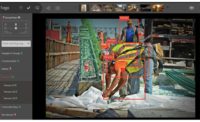With the federal Families First Coronavirus Response Act in effect on April 1, design and construction firms are grappling with new provisions for emergency paid sick leave and paid family medical leave.
Under the law, firms with fewer than 500 employees can take payroll tax credits for providing staff with paid COVID-19-linked leave for themselves or family members.
[For ENR’s latest coverage of the impacts of the COVID-19 pandemic, click here]
Workers for eligible employers can receive up to 80 hours of paid sick leave at a rate equal to 100% of the employee’s pay—capped at $511 per day for a total of 10 workdays. Someone under quarantine or caring for a family member can receive up to 80 hours of paid sick leave at two-thirds of the employee’s pay—capped at $200 per day.
Claiborne Guy, an AGC work policy director, sees multiple areas of paid leave provisions creating confusion for contractors.
“Some people are assuming that if they are considered an essential business, they are exempt from this—that is not true,” he said. “So far, the U.S. Labor Dept. has not said it considers an essential business any different.”
Guy adds that any state or local stay-at-home orders do not generally count as a qualification for paid leave. Specific to construction, he says employees affected by shutdowns do not qualify for paid leave because there would be no work available from which the employee could take leave.
There also is confusion about employees who work on out-of-state jobsites and then return to their home states. Several states require people who travel from other states to self-quarantine for 14 days. “The question is the potential for abuse there,” Guy says.
Employers and employees must keep thorough records of any leave claims. To gain a small business exemption, a firm must prove that the cost of paid leave would exceed revenue or risk operational capability.
“We see the potential for a wave of lawsuits around this,” Guy says. He adds that employees must sufficiently prove leave eligibility. Given the limits of COVID-19 testing and broad symptoms, “it’s pretty vague around the question of people seeking a diagnosis,” he says.


